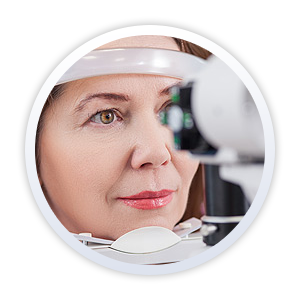What is a pterygium?
A pterygium (pronounced tah-ridge’-E-um) is a non-cancerous, slightly raised and fleshy growth that appears on the white part of the eye (conjunctiva) and frequently progresses onto the cornea. It is not unusual to observe tiny red blood vessels within the growing tissue.
What are the symptoms of a pterygium?
A pterygium is typically a painless area of raised white tissue, although you can experience some inflammation accompanied by burning sensations and a feeling that a foreign body is in your eye.
When should I seek treatment for a pterygium?
If you have been diagnosed with a pterygium, you should see your doctor each year to ensure that if needed, treatment can be initiated quickly. If a pterygium grows large enough, it can interfere with vision by extending onto the cornea.
How is a pterygium treated?
If a pterygium is not causing symptoms, your doctor may simply choose to monitor for any changes in appearance or symptoms. Inflammation can often be controlled with a mild steroid. If symptoms progress, or if vision becomes affected, or if the pterygium becomes cosmetically undesirable, your doctor may recommend surgery to remove the growth. The surgery is typically performed in the office.
How can I prevent a pterygium from occurring or reoccurring?
Unfortunately, medicine has not been able to determine the exact cause of pterygia. It is not uncommon for a pterygium to return after it has been removed. Risk factors include exposure to excessive amounts of sun, dust and wind, particularly in outdoor occupations such as farming. Protection from UV exposure through the use of sunglasses, hats and other means may help reduce the risk of developing this condition.





